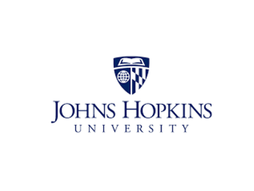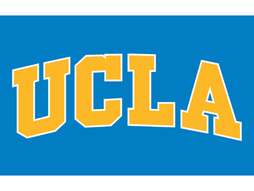Everything You Need to Know About the AAN Neuroscience Research Prize
Are you interested in biology and the life sciences? If so, venturing into the world of neuroscience can pique your curiosity, as learning about the nervous system can provide valuable insight in how the brain is able to learn and how to develop treatments for various diseases, like dementia and brain tumors. It is undeniably a growing field and the number of college students studying neuroscience as their major are growing. In 2020-2021, 11,615 degrees in neurobiology and neurosciences were awarded, which was a 9.5% increase from the previous year’s.
Most high schools don’t offer neuroscience - so how do you get involved in the field in high school? In this piece, we’ll explore the most prestigious prize in neuroscience for high school students - the American Academy of Neuroscience (AAN) Neuroscience Research Prize, you will study the world of the brain and nervous system.

What is the AAN Neuroscience Research Prize?
The AAN is a professional society representing over 38,000 neurologists and neuroscientists, and through their prestigious awards, they recognize outstanding contributions to research in the field.
This AAN Neuroscience Research Prize provides high schoolers the opportunity to explore the world of the brain and nervous system through research. Several students will be rewarded for their scientific skill and talent in their contributions to neuroscience, along with their teachers who have demonstrated support for students interested in the field.
Is the AAN Neuroscience Research Prize Prestigious?
This research competition is highly prestigious. Because earning one of the prizes is very competitive, it requires rigorous and vigilant research from the participant. Being recognized for your research will allow you to formally present your research at the AAN Annual Meetings and meet with other neuroscientists in the industry.
Who is eligible?
The AAN Neuroscience Research Prize has several important rules for the eligibility of participants:
Students must be enrolled in secondary school (grades 9-12) in the United States, regardless of age.
Applications must represent original research as well as the original written work of the applicant.
Projects do not need to occur in formal nor traditional lab settings.
Each project should be the work of an individual student; group projects are not eligible (teachers are encouraged to provide guidance as needed, but must allow each student to demonstrate his/her own creativity).
Family members of the judges, the AAN Science Committee, or AAN staff are not eligible to apply
In the application process, students will need to submit their:
Completed application form
Maximum 300-word abstract
Research report
Bibliography
A confirmation statement from your parent/guardian, teacher, and mentor
What are the prizes?
The prizes are varied in the amount of financial and academic benefits they provide to those selected.
A select four (4) of the applicant pool will each receive a $1,000 prize.
Three (3) winners and their teachers will receive coach airfare, two nights hotel, $100 per day for expenses (2 days maximum), complimentary registration, and the opportunity to present their work during a scientific poster session at the AAN 75th Annual Meeting in Boston, MA.
One (1) winner and their teacher will receive coach airfare, three nights hotel, a daily per diem (up to three days), and the opportunity to present his/her work at the 2023 Child Neurology Society Annual Meeting.
What criteria are research submissions based on?
All project entries received by the deadline date will be judged by physician and scientist members of the AAN based on the following criteria:
Relevance to Neuroscience: The student investigated a problem that concerns the brain or the nervous system including, but not limited to: anatomy, physiology, pathology, function, and behavior. Behavior and psychology projects are not encouraged unless there is a clear link to neurophysiology.
Creativity: Creativity will be based on the originality of the problem-solving approach, even if the specific problem being addressed is not a new or unusual one.
Interpretation of Data: The scope of the hypothesis and methodology is feasible. The potential significance of the experiments is placed in the proper perspective. Potential pitfalls of the methodology or interpretation have been addressed
Research Reports: The report is organized, well-written, and the accompanying figures and tables are clearly labeled and readable.
Finalists: Ten finalists will have the opportunity to have their project reviewed by two additional judges. The winners will be selected based on the judging criteria listed above.
What is the deadline?
Applications for this competition are closed at this time, but they are due around November of each year.
It is recommended that students who are interested in applying should begin their research projects early in order to have sufficient time to propose their idea, conduct research and experimental trials if necessary, and write a paper.
Who were the past winners and what was their research about?
You can find the 2021 winners and their research topics here. Their research spanned from various topics, including the effects of cocaine addiction, treatments for patients with glioblastoma, and implications in Alzheimer’s disease treatment. All of these projects were awarded because of these projects’ implications in bettering the understanding of disorders and diseases.
You can find a full list of past winners here.
Tips to win the AAN Neuroscience Research Prize
The first step to winning the AAN Neuroscience Research Prize is passion. Because all of these projects are individual based, the student has to be incredibly passionate about their research. It would be recommended that you find what topic in neuroscience interests you and formulate a question about it. Some examples may be: Are brain implants viable? Can MRI machines be optimized in a new way? What are the underlying causes of ADHD?
Once you have established a topic of interest, you should start conducting research. There are tons of online resources and journals that you can access to provide more context into your subject, such as the NIH Blueprint for Neuroscience Research, Nature Neuroscience, and more. Available here is a list of journals that are focused on neuroscience.
Reaching out to a teacher or professor can greatly aid in your research paper. Although your paper has to be your own work, they may provide valuable guidance in your research, especially if you are unfamiliar with the process. Some university professors may allow you to visit the campus research centers and conduct research with them over the summer. When contacting these individuals, make sure to emphasize your passion and give a brief overview of what you would like to research in neuroscience.
Finally, give yourself enough time. Writing a good research paper cannot be done the night before. While there is no set timeline for each research step, try to spend time researching over the summer and give yourself at least several weeks to draft, proofread, and revise your paper before the submission deadline.
Questions?
As stated on their website, if you’d like to know more about the research prize, please contact the Scientific Awards Team at science@aan.com.
If you’re looking for a competitive mentored research program in subjects like data science, machine learning, political theory, biology, and chemistry, consider applying to Horizon’s Research Seminars and Labs!
This is a selective virtual research program that lets you engage in advanced research and develop a research paper on a subject of your choosing. Horizon has worked with 1000+ high school students so far and offers 600+ research specializations for you to choose from.
You can find the application link here
Lydia is currently a sophomore at Harvard University, studying Molecular and Cellular Biology. During high school, she pursued engineering activities like attending the Governor's School of Engineering and Technology. In her spare time, she likes to create digital art while listening to music.
Image source: American Academy of Neurology






